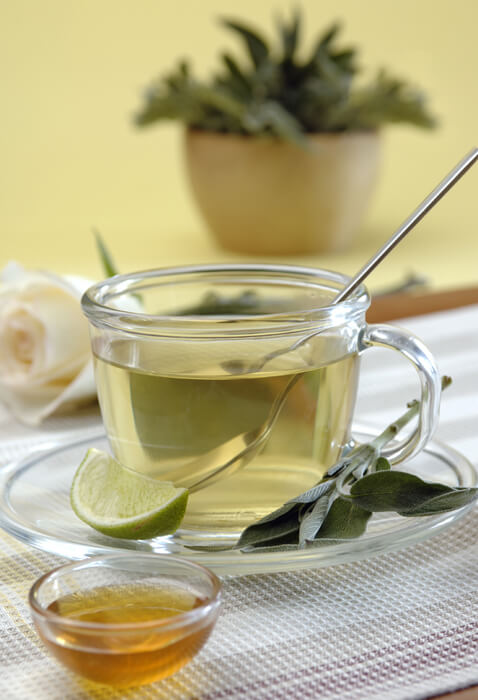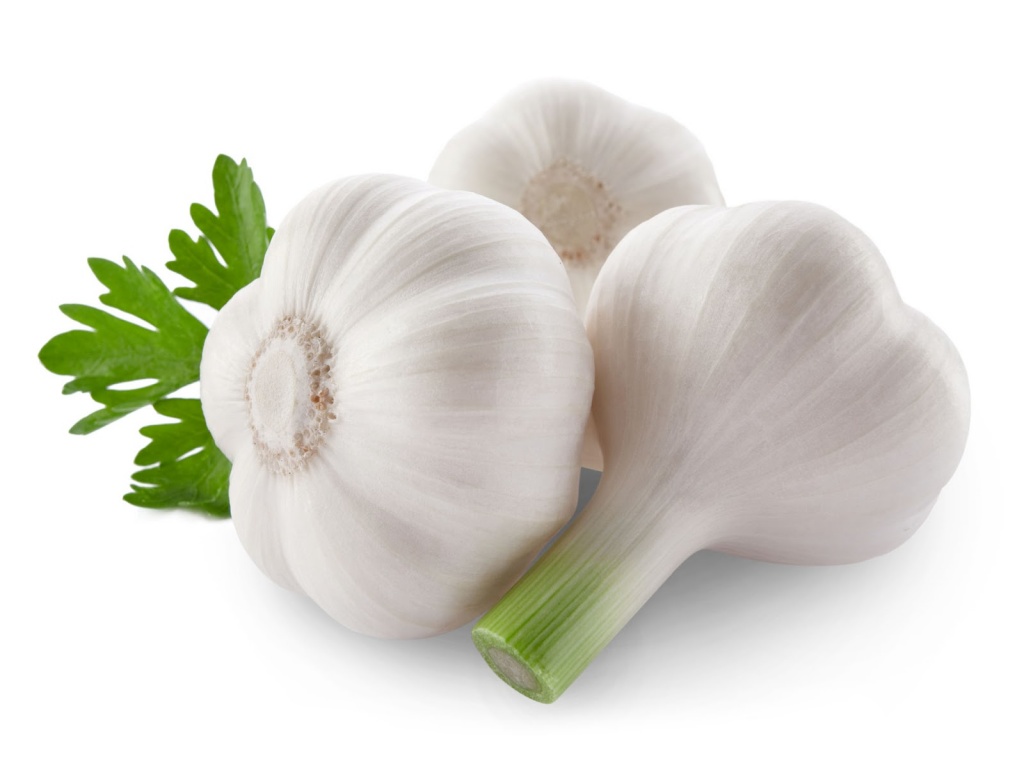Teas to Reduce Belly Fat Naturally

There are many home remedies that promise to reduce belly fat and accelerate metabolism. Your belly can be one of the most difficult areas to keep slim and trim, and may require a bit more help to whip into shape. Thankfully, there are certain teas that can naturally help reduce belly fat. Discover them below!
A healthy diet, frequent exercise and commercial beauty treatments are only some of the options that you can pursue. When you combine them all you’ll find that it’s easier to maintain a healthy body weight and trim figure.
Thanks to genetics your body will naturally accumulate fat deposits in your belly area. If you’re having trouble burning fat in that area of your body, you’re not alone. But there are natural food remedies that can help you in getting rid of those deposits. Why not give them a try?
Find out more: 5 Things You Can Do to Reduce Your Fat Mass
Teas to reduce belly fat: honey tea
The first of our teas to reduce belly fat is honey and cinnamon tea. It’s a natural remedy to help your body create a steady metabolic rate and burn off excess fat, especially in the abdominal area. The secret is to substitute processed and synthetic sugars with natural honey. To be effective, we suggest you add a cup to your breakfast routine and drink a cup before bed.
Ingredients
- 1 tablespoon bee honey
- 1/2 tablespoon ground cinnamon
- 1 cup hot distilled water
Preparation
Firstly, boil water to the desired temperature. Then stir in honey and cinnamon and mix well until both are dissolved. Let the ingredients step for at least five minutes before drinking. Drink daily and you’ll begin to notice results within a week.
Lemon tea
Lemons are a super fruit, chock full of the best nutritional elements, including those that help you burn fat and maintain a healthy body weight. For stubborn belly fat, making lemon tea part of your daily routine is a smart choice.
And in addition to helping you tackle the fat deposits that accumulate in your abdomen, lemons also have anti-inflammatory properties. These can also help you achieve that flat belly you’ve been working for.
Ingredients
- One lemon
- Large cup of hot water
Preparation
Juice the lemon well into a cup. Then add hot water. We recommend that you add this tea to your morning routine. In order to boost its effectiveness and for a tastier tea you can add ginger, honey or green tea to steep.
Sage and laurel tea
If you’ve been experiencing some digestion issues, you’ll be glad you added this infusion to your diet. Sage and laurel tea not only helps combat belly fat but can also help regulate your digestive system.
Ingredients
- 5 laurel leaves
- A handful of sage leaves
- A cinnamon stick
- 2 pints of water
Preparation
Firstly, boil 2 pints of water. When at boiling point, add the sage and laurel leaves as well as the cinnamon stick. Let it boil for 15 minutes and then remove from heat. Strain and enjoy! We recommend making this tea part of your routine for at least five days consecutively.
Garlic and lemon tea
For years garlic has been used for its nutritional and health benefits which include helping stimulate digestion, combating flatulence and treating inflamed intestines. In addition, garlic has been proven to help detoxify by helping the body to eliminate toxins and waste. This not only aids weight loss, but also protects the body from many illnesses and diseases.
Lemons are one of the most effective fat burners out there. Lemons can also benefit the digestive tract and aid in reducing toxins, properties that anyone with weight loss goals invests in.
The last of our teas to reduce belly fat involves lemon and garlic together. When you combine these two ingredients you’ll have in your hands one of the most powerful fat burners available to you naturally.
Ingredients
- 1 head of garlic
- 2 lemons
- 3 pints of water
Preparation
- In a stove-safe bowl, begin to boil the water. While the water is heating, peel a garlic head and then add to the water.
- Then wash your lemons. Cut them in quarters leaving the skin on. Add them to your water and garlic when it begins to boil.
- After that, reduce to a low heat and let it simmer for 15 minutes.
- Finally, strain and leave to cool for at least 5 minutes. You can enjoy this drink on a daily basis.
Things to remember
- All of the above teas to reduce belly fat are great tools in diet. However, you should keep in mind that they work best when combined with a healthy diet, regular exercise and sensible weight loss practices.
- For your health and the best results, you should be aware of the ingredients that may cause bloating or other side effects. Once you’ve found out which they are, avoid eating or drinking them to help you keep a flat belly.
- Drink these teas as recommended. Be aware that if used to excess they may have negative side effects.
Read more: 8 Common Causes of Uncomfortable Bloating
Try adding ginger, green tea and cinnamon to your daily diet to help keep your body’s metabolism balanced and healthy.
All cited sources were thoroughly reviewed by our team to ensure their quality, reliability, currency, and validity. The bibliography of this article was considered reliable and of academic or scientific accuracy.
- Anh, N. H., Kim, S. J., Long, N. P., Min, J. E., Yoon, Y. C., Lee, E. G., Kim, M., Kim, T. J., Yang, Y. Y., Son, E. Y., Yoon, S. J., Diem, N. C., Kim, H. M., & Kwon, S. W. (2020). Ginger on Human Health: A Comprehensive Systematic Review of 109 Randomized Controlled Trials. Nutrients, 12(1), 157. https://www.ncbi.nlm.nih.gov/pmc/articles/PMC7019938/
- ARTICHOKE: Overview, uses, side effects, precautions, interactions, dosing and reviews. (s/f). Webmd.com. Recuperado el 10 de octubre de 2023, de https://www.webmd.com/vitamins/ai/ingredientmono-842/artichoke
- Batool, S., Khera, R. A., Hanif, M. A., & Ayub, M. A. (2020). Bay Leaf. Medicinal Plants of South Asia, 63–74.
https://www.ncbi.nlm.nih.gov/pmc/articles/PMC7152419/ - Carneiro, D. M., Freire, R. C., Honório, T. C., Zoghaib, I., Cardoso, F. F., Tresvenzol, L. M., de Paula, J. R., Sousa, A. L., Jardim, P. C., & da Cunha, L. C. (2014). Randomized, Double-Blind Clinical Trial to Assess the Acute Diuretic Effect of Equisetum arvense (Field Horsetail) in Healthy Volunteers. Evidence-based complementary and alternative medicine : eCAM, 2014, 760683.
https://pubmed.ncbi.nlm.nih.gov/24723963/ - Costabile, A., Kolida, S., Klinder, A., Gietl, E., Bäuerlein, M., Frohberg, C., Landschütze, V., & Gibson, G. R. (2010). A double-blind, placebo-controlled, cross-over study to establish the bifidogenic effect of a very-long-chain inulin extracted from globe artichoke (Cynara scolymus) in healthy human subjects. The British journal of nutrition, 104(7), 1007–1017.
https://pubmed.ncbi.nlm.nih.gov/20591206/ - Das, B., Rabalais, J., Kozan, P., Lu, T., Durali, N., Okamoto, K., McGeough, M. D., Lee, B. J., Barrett, K. E., Marchelletta, R., & Sivagnanam, M. (2022). The effect of a fennel seed extract on the STAT signaling and intestinal barrier function. PloS one, 17(7), e0271045. https://www.ncbi.nlm.nih.gov/pmc/articles/PMC9269469/
- Klimek-Szczykutowicz, M., Szopa, A., & Ekiert, H. (2020). Citrus limon (Lemon) Phenomenon-A Review of the Chemistry, Pharmacological Properties, Applications in the Modern Pharmaceutical, Food, and Cosmetics Industries, and Biotechnological Studies. Plants (Basel, Switzerland), 9(1), 119. https://www.ncbi.nlm.nih.gov/pmc/articles/PMC7020168/
- Mousavi, S. M., Rahmani, J., Kord-Varkaneh, H., Sheikhi, A., Larijani, B., & Esmaillzadeh, A. (2020). Cinnamon supplementation positively affects obesity: A systematic review and dose-response meta-analysis of randomized controlled trials. Clinical nutrition (Edinburgh, Scotland), 39(1), 123–133. https://pubmed.ncbi.nlm.nih.gov/30799194/
- Schmeda-Hirschmann, G., Rodriguez, J. A., Theoduloz, C., Astudillo, S. L., Feresin, G. E., & Tapia, A. (2003). Free-radical scavengers and antioxidants from Peumus boldus Mol. (“Boldo”). Free radical research, 37(4), 447–452.
https://pubmed.ncbi.nlm.nih.gov/12747739/ - Srivastava, J. K., Shankar, E., & Gupta, S. (2010). Chamomile: A herbal medicine of the past with bright future. Molecular medicine reports, 3(6), 895–901. https://www.ncbi.nlm.nih.gov/pmc/articles/PMC2995283/
- Sun, B., Wu, L., Wu, Y., Zhang, C., Qin, L., Hayashi, M., Kudo, M., Gao, M., & Liu, T. (2020). Therapeutic Potential of Centella asiatica and Its Triterpenes: A Review. Frontiers in pharmacology, 11, 568032.
https://www.frontiersin.org/articles/10.3389/fphar.2020.568032/full - WebMD Editorial. (2022). Health Benefits of Burdock Root. WebMD.
https://www.webmd.com/diet/health-benefits-burdock-root
This text is provided for informational purposes only and does not replace consultation with a professional. If in doubt, consult your specialist.








